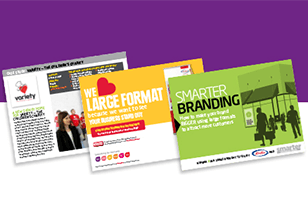
You want great results for your business and great design can set your brand apart. But when it comes to creating the right identity for your brand, you have to know your customers and your brand should reflect this understanding. The basic science of branding identity focuses on how different colours, words, shapes and images make people feel. Get it right and you present a ‘face’ or personality that potential customers relate to.
But why exactly is a good brand design important for my business?
It’s Easy to Identify
Before you can truly begin to understand why good branding is identifiable, it’s a good idea to use an example. Take McDonald’s for example. All you probably have to see is the classic shape of the “M” arches to immediately know that it is a symbol of the McDonald’s corporation (this is what is known as a good brand design). McDonald’s also does a great job of making a positive and enjoyable experience in-store through the use of imagery and colour. It has made such a personal connection to its consumer base that they can immediately think of their brand just by seeing something as simple as a shape and the food. By delivering an all-encompassing experience, the company is able to make a personal connection with its customers which is a great way to build a strong brand.
Your Brand Speaks to Your Audience
A brand design is considered to be the best when it speaks correctly to its audience. For example, if you’re targeting senior citizens in your advertising for a nursing home, you don’t want to use wild graphics or typefaces that might be more synonymous with a nightclub or theme park. The wrong imagery can be disastrous to the effectiveness of your marketing; whereas the right imagery lets people know what your business stands for and ensures your brand design speaks directly to its audience.
It Says Something about You
Effective brand design is also important because it speaks volumes about who you are. A branding system that looks professional, with balance and personality, will communicate many things about you and the way you want to do business. To create that all important first impression, it’s important to ensure your brand and design communications are consistent, ensuring the same graphic design elements and rules for every medium are upheld. This is vital to the branding process.
Overall, a good brand design can be the difference between you landing a sale or not. It can make or break your image in the marketplace. One of the biggest benefits of working with a professional designer – apart from getting a professional brand identity – is that you’ll get advice on how to be consistent with your branding.
Your designer should give you an easy to follow style guide that will cover all the main elements of your brand identity (logo, colours and typography) as well as specific instructions for common usage of your brand such as stationery and signage.
Think of the style guide as your rule book for protecting the quality of your brand. Throwing out the rule book can be tempting but remember, an inconsistent branding suggests to your customers that you’re also inconsistent in other areas of your business, such as customer service!
It’s important to remember that your brand identity is more than just your company logo design. A great branding identity focuses on a whole range of different aspects that come together to create a unique impression about your business, including:
- Logo, brand name and/or mark
- Slogan or description
- Voice or positioning
- Typography style
- Colour palette
- Images
- Branding rules
- In-store experience
- Customer service
Kwik Kopy has teamed up with Smarter Business Ideas to bring you an exciting free series of eBooks packed with expert branding advice.


